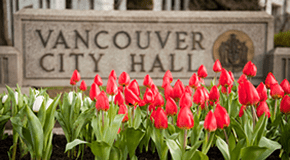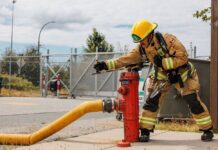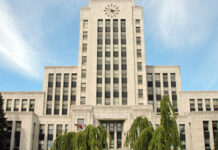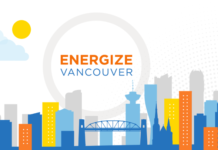CITY of Vancvouver staff on Tuesday provided Vancouver City Council with a high-level summary of travel trends in 2020 and the City’s progress on safety, active transportation projects, and mobility recovery.
As people start to travel more as COVID-19 restrictions ease, lessons learned during the pandemic will be critical pieces of the recovery. Economic and community recovery will rely on thoughtful use of street space. Facilitating safe, comfortable and reliable walking, cycling, transit and public space will continue to be a top priority, according to the staff.
Highlights from the presentation include:
Transportation safety
The City continues to improve its transportation infrastructure to better serve pedestrians and improve safety. Over the last two years, improvements include:
- More than 380 new or replaced curb ramps
- 37 pedestrian signals modified to be fully accessible
- 13 new rectangular rapid flashing beacons
- 3 new full traffic signals
- 9 new walking and cycling signals
Additionally, the City continues to roll out age-friendly and pedestrian safety improvements at intersections, including:
- 113 intersections adjusted for slower walking speeds
- 8 new leading pedestrian intervals (where people walking get to move before motor vehicles)
Road safety requests
In 2019, the City received 2,300 requests for road safety improvements. Later this year, the City will launch a new self-service webpage to provide residents with more details on its road safety offerings, how upgrades are prioritized and upcoming safety improvements. This will give residents better tools to understand prioritization and how to connect with the City on issues that are important to them. The City expects that this will help triage urgent cases and reduce the delay in responding to requests. Full details will be announced in the fall.
Safety and schools
- Slow Zone – The first Slow Zone neighbourhood pilot launched in early March 2021 in Grandview-Woodland. The City continues to monitor safety and behaviour changes to evaluate the next steps. Highlights to date:
- 45% of vehicles drove under 30km/h after the slow zone, compared to 40% before
- Average speeds stayed similar (reduced from 33 km/h to 32 km/h)
- Public feedback generally positive with multiple neighbourhoods requesting to be considered for future slow zones
- School Streets – The City partnered with the Vancouver School Board to pilot School Streets at three local elementary schools for four weeks this spring. (A School Street is a car-free block beside a school open to walking, biking, and rolling during pick-up/drop-off.) Results from the pilot indicated:
- 29% of families reported driving less
- 32% of families reported walking more
- The School Street encouraged more than 230 families to walk, bike or roll to school for the first time
- 76% of parents are in support of School Street continuing
- Transportation Demand Management (TDM) Action Plan – As part of the City’s Climate Emergency Response, the City is finalizing its TDM Action Plan, which is a non-infrastructure approach to increase active transportation. Upcoming actions in the plan include partnering with TransLink and the Province to pilot a Walking School Bus program and expanding the School Streets program to support more elementary schools this fall.
Transit
- Transit ridership declined more than other modes due to the pandemic. Additional bus priority efforts are critical to supporting essential trips and ridership recovery, with reduced TransLink budgets. Of all transit service types in the region, bus ridership has remained strongest.
- In partnership with TransLink, the City delivered six projects to improve the travel time and reliability of transit in the region, including 22.1 km of new bus lanes.
- Major construction is officially underway on the Broadway Subway Project. Over the past several months, work has focused on site preparation, building demolition and utility relocations along the Broadway corridor. The next phase will involve the installation of traffic decks along the station sites.
Click here to view staff’s full presentation.














Usual scam from a government that always looks away. No one will stop at a stop sign, unless there is oncoming traffic, so pedestrians are road food. The city unions are seen blowing stop signs daily. With zero social responsibility, maybe kids are being admitted to the hospital with traffic injuries, because their civic leaders are blind and uninterested in a law-abiding, well run city. Kids? We look the other way and focus on ending the use of plastic bags, while our kids are traumatized by lawless streets and adults. High ICBC Rates? Really?